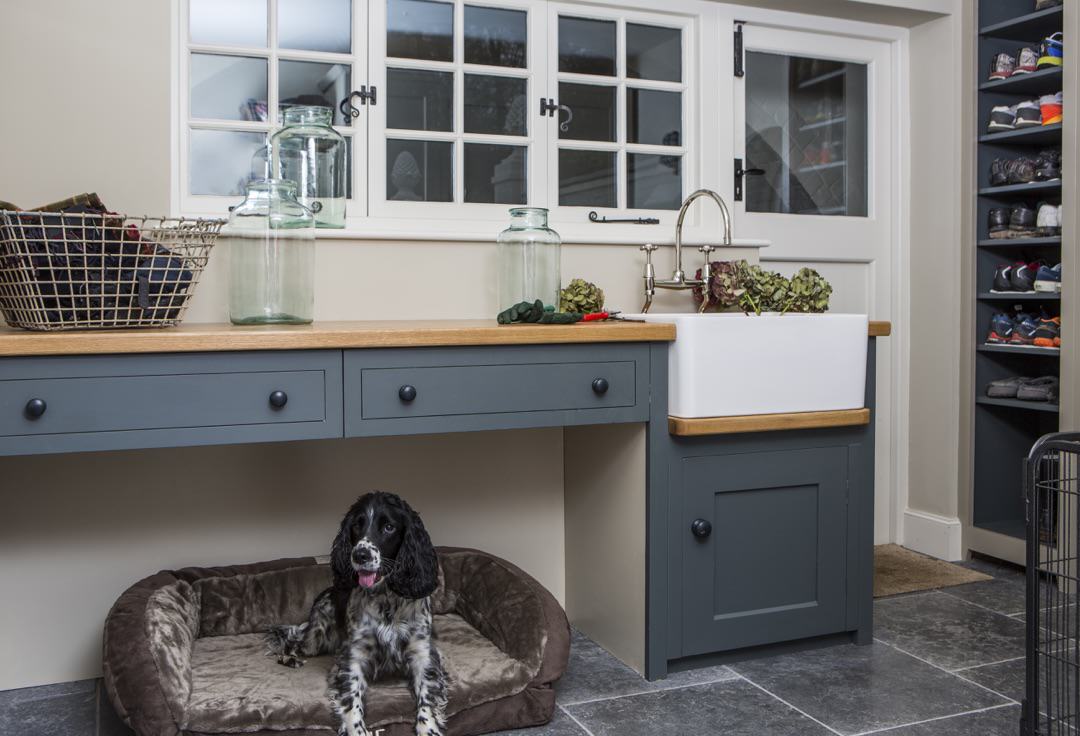We are all increasingly aware of the importance of sustainability in every aspect of our lives – and lifestyles. Sustainable development in design is no exception. So, we asked our team to discuss this further:
The concept can be interpreted in many different ways. But we like the clarity of the Brundtland Report’s definition “Sustainable development is development that meets the needs of the present, without compromising the ability of future generations to meet their own needs.” To achieve this, planning and preparation is key. Accordingly, we are seeing a huge demand for sustainable design services, as more and more clients prioritise sustainable development goals for their homes.
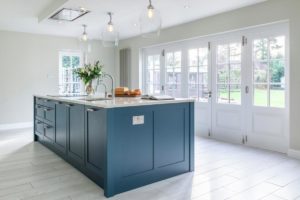
Size, location, layout, insulation and lighting are all key elements of sustainable development and design. Maximising light and space, and minimising energy expenditure, are key client priorities
The rise of sustainable design
There are many reasons why sustainable development/design has become so important. First and foremost, it helps to lower negative impacts on the environment, and improves building performance. It minimises waste. It improves the value of your property – and, crucially, creates a healthy and productive environment. The COVID-19 pandemic has certainly shone a spotlight on the importance of being more thoughtful about ourselves and our environment. It has also transformed how we view our homes – and what we want from them. Fortunately, this sea change has coincided with an increase in the quality and quantity of sustainable designs available, both inside and out.
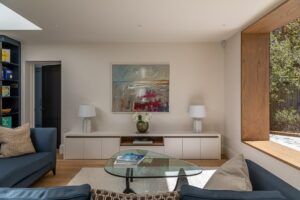
‘Opening up’ spaces and maximising the natural light available with high-performance windows is an obvious, yet highly effective way, to introduce sustainable development elements to a project. Project collaboration with Holland Green Architecture and Interior Design.
New expectations
The events of the past 18 months or so have had a profound effect on home design. There’s no doubt we have changed the way we live – and the way we want to live. After all, they say that necessity is the mother of invention. “I think that people have learnt to become more self-sufficient, largely because they have had to!”, explains our director Mark Taylor. “People have also reallocated their budgets. Foreign holidays might not have been possible, yet renovations have skyrocketed. Then, of course, there’s the working from home phenomenon. This has prompted people to use their properties very differently; this is not just in terms of adding another room or a home office in the garden.”
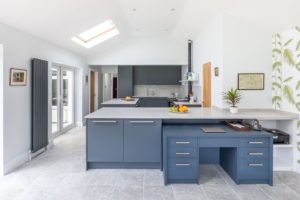
Working from home has prompted interior designs to work smarter – especially where space is limited. This pull-out desk incorporated into a kitchen offers a practical design solution. It allows the room to adapt quickly and easily to changing needs
Working from home has definitely made us much more aware of the space we have, and how best to use it. It has prompted many people to finally get round to home improvements which have long been languishing on the back-burner. In turn, trades have become so busy it’s now difficult to get renovation projects complete without booking well in advance.
Family and wellbeing
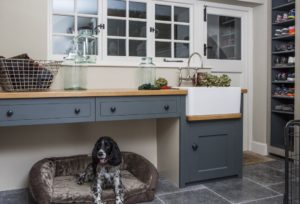
A rise in pet ownership has led to demand for different areas such as this boot room, which houses the dog, and provides a handy additional storage area too
Done properly, sustainable development isn’t just good for the environment, it enhances personal wellbeing too. Spending so much more time at home and with loved ones during the pandemic has led to a marked recalibration of priorities. Many people have reassessed the importance of family life, health and happiness and have made changes to their home accordingly. This might include creating space to decompress, and changing lighting and colours. Another key development is the rise in pet ownership. This had led to the creation of more/different spaces in which to accommodate them, such as boot rooms and utility areas.
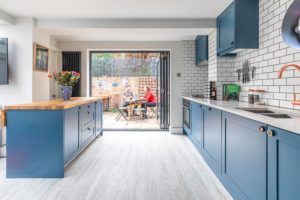
Clever design and planning make the most of every inch of space – inside and out. Here our MeThD custom range incorporates a versatile movable island to enhance connectivity between the kitchen and the garden
Sustainable development is a win for the environment, your personal and professional lifestyle – and your wallet. Updating your interiors, installing a new kitchen or bathroom, or even adding another room such as a properly insulated orangery, can all add significant value to your property. Before you proceed, however, it’s important to identify your key objectives. For some people, a sustainable design project is all about ‘opening up’ existing space. For others, the priority is to create more rooms, to accommodate multi-generational living and working from home. Design professionals can best advise how to do both, for example, by creating hidden break-out spaces, sliding doors, and so on.
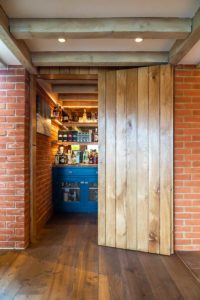
Sustainable design should suit your lifestyle. Some clients want open spaces and others need rooms that adapt as needed. A door that slides back to reveal a hidden bar offers the best of both worlds!
Sustainable materials
Many synergistic elements combine when creating and implementing a successful sustainable development interiors project. These include factors such as size, location, layout, insulation, lighting and energy. The use of sustainable materials has also become increasingly popular, as clients become more aware of the environment and climate change – which has been hugely publicised throughout the pandemic. With so many of us working from home over the past 18 months, there was a considerable decrease in global emissions. This in turn has made us all question what else we can do to help. Popular design trends include carpets made from recycled plastics, concrete work surfaces, large sheets of recycled ocean plastics converted into work surfaces and wall coverings, and eco paints.
Graphenstone has a great range of ‘green’ paints and coatings. This eco-friendly range of products includes natural elements that help to purify the air we breathe inside our homes. It’s recommended for indoor enclosures, hospitals, nurseries, retirement homes, hotels, environments and rooms for babies and children. It’s also suitable for people suffering from chemical intolerances.
Their paints even help limit pathogens derived from Sick Building Syndrome and prevent the growth of mould, fungi and bacteria.
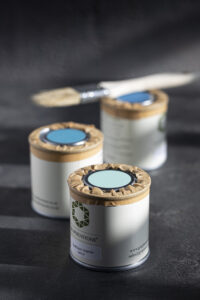
Eco-friendly paints, such as Graphenstone, are enjoying a huge boom in sales, as more and more people prioritise sustainable development and interior design. Graphenstone products are made from natural elements (and even the packaging is 100% recycled and recyclable). Graphenstone lime paints are carbon-neutral and ensure walls can breathe. As the paint cures over its lifetime, it can absorb up to 5.5kg of CO2 per 15 litres from the local environment where it’s applied
High quality, recycled and recyclable plastic is another sustainable material we are incorporating into many of our new kitchen designs. The Good Plastic Company aims to transform waste into beauty. In fact, its unique technology re-uses up to 75% of existing types of plastic. It uses post-industrial and post-consumer plastic waste to create stylish, modern wall panels, shelving and storage.
Back to the future
Looking ahead, we think sustainability will continue to be a key theme within home décor. Recycling has become far more popular and prominent. Many people are now thinking of clever and unusual ways to upcycle and recycle, in order to minimise waste and be kinder to the environment. We also think smart homes will go much further than simply featuring stand-alone devices. They will provide greater insights into energy use that will allow us to become more energy-efficient and mindful of ecological factors.
All the senses will become increasingly important. Clients are becoming more conscious of how sound, textures and lighting affect mood and productivity. It was interesting to see that designing for wellbeing was a common theme at Decorex. We noticed nature and biophilic design principles have inspired many companies and brands. Wallpapering a whole room – as opposed to a token feature wall – seems to be back on-trend. Also, beautiful texture wallpapers are now featuring eye-catching pops of colour. There is definitely a shift towards warmer and more welcoming textures and patterns. Gone are the days of grey schemes. Colour is definitely back and here to stay.

